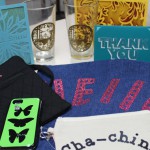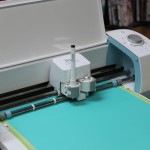Fremont receives grant for makerbox equipment
By Angie Landsverk
Libraries are becoming more than places where people borrow books.
“Libraries are evolving into places where you can create. They are becoming the community’s heartbeat,” said Susan Frick, the director of the Neuschafer Community Library in Fremont.
Area libraries are already known for the programs they offer for people of all ages, as well as for access to Internet for those who may not have a computer at home.
Now, these libraries are also becoming places where people go to use a 3-D printer, die-cut machine, canning maker or sewing machine.
Providing places where people have access to technology is referred to as a makerspace, and these spaces are popping up in libraries throughout the country.
Waupaca Middle School recently created such a space for its students.
However, for some libraries doing so is tricky.
“All of us in small libraries have no space for makerspaces,” Frick said. “We decided to do makersboxes, to be shared.”
A technology grant for rural libraries is making it possible.
The Outagamie Waupaca Library System wrote the grant on behalf of six libraries in Waupaca County.
“We all got together and said we didn’t have room, space,” Frick said.
In addition to the library in Fremont, libraries in Clintonville, Manawa, Marion, New London and Scandinavia also received funding.
“We are going to share our makerbox with the other libraries that got the grant,” she said.
Neuschafer Community Library’s staff decided to use its grant to purchase a Cricut, which is a die-cut machine.
“It cuts through 60 different kinds of material, from paper to leather,” Frick said. “The technology part is it’s tied to technology via Bluetooth with an iPad.”
The library has a subscription to a design center, which offers close to 25,000 different projects.
That subscription is free to library patrons, which means they are able to choose a project on the iPad and then follow the step-by-step instructions on it.

Sharon Wilson works at Fremont’s library and has been experimenting with the technology.
Since the machine arrived in fall, staff made greeting cards, iron-on material for fabric and a cellphone cover.
“It has a lot of accessories to it,” Frick said. “We are still exploring this ourselves, what we can do with it.”
Wilson said the grant also allowed the library to purchase the tools it needed, as well as paper.
Patrons may also bring their own paper to the library, and a staff member will show them how to use the technology.
Frick said they plan to demonstrate how the machine may be used at a future Lunch N Learn program.
“It will be available for anybody to come into the library and use,” she said. “It will be for daily use, not just for programs.”
Other libraries in the county used their grant dollars to purchase a 3-D printer, sewing machine, canning maker, coding machine and a sound recorder.
Frick noted the Waupaca Area Public Library received funding from a different source for its LEGO robots and will also share those with the six libraries.
“We’re exchanging them now via programming needs,” Frick said.
She said each library needed a financial partner, and in the case of Fremont’s library, that partner is the Friends of the Library.
The group will help cover the cost of maintenance and new items for the diecut machine.
Wilson is available to help those who visit Neuschafer Community Library and want to use the Cricut.
“If we know someone is coming, we can have it set up for them,” Frick said.
What she likes about the makerbox idea is how it reaches all age groups.
“It’s very exciting. They’re all modern technology. That’s the beauty of it it,” Frick said. “They can come to the library, learn things, use, create, get an education. How fun is that.”


